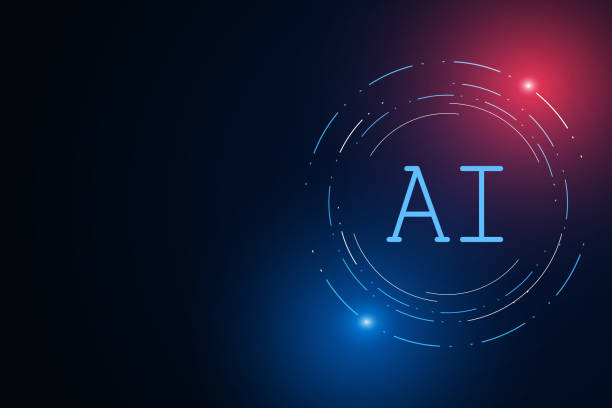The Importance of Multilingual Website Design in the Global Digital Age
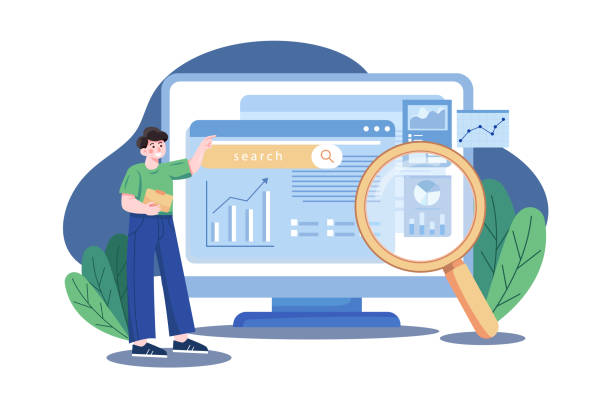
In today’s world, where geographical boundaries have less meaning in the virtual space, having a #multilingual website is no longer a competitive advantage, but a necessity for any business that dreams of #global expansion.
#Multilingual website design allows you to reach a wider audience and convey your message in their native language.
This action not only leads to an increase in your website traffic but also causes increased user credibility and trust.
Many internet users prefer to receive information in their own language, and if this is not possible, they simply leave your website.
Therefore, investing in multilingual website design is a strategic and intelligent decision that can yield significant returns.
This section explains the importance of this type of website design and helps you better understand why you need it.
This is an essential step to access international markets and attract customers from all over the world.
A website offered in multiple languages not only increases accessibility but also demonstrates your respect for the cultural diversity of users.
This, in turn, creates a more positive user experience and increases the chance of converting visitors into customers.
Finally, you should know that multilingual website design is not just about translating words, but #localizing content for different audiences, which includes considering cultural, political, and even numerical and date usage differences.
Is your e-commerce site ready to attract maximum customers and increase sales? Rasawweb transforms your online business with modern and efficient e-commerce website designs.
✅ Increased speed and improved SEO
✅ Excellent user experience on mobile and desktop⚡ Get free e-commerce website design consultation from Rasawweb!
Initial Planning and Strategy for Multilingual Website Development

Before taking any practical steps for #multilingual website design, you need a precise plan and a well-defined strategy.
This vital stage includes determining target languages, accurate understanding of #target audiences in each region, and comprehending their needs and cultures.
Do you intend to translate only the main content, or should all sections of the website, including comments, forms, and error messages, also be multilingual? These are questions whose answers can define your design path.
Furthermore, you need to decide how you want to manage different languages on your website; do you use subdomains, entirely separate domains, or subfolders? Each of these methods has its own advantages and disadvantages in terms of #SEO and maintenance that need to be carefully considered.
This section is a guide to starting a successful #multilingual website design project and helps you make informed decisions in the initial stages.
Correct identification of markets and their cultural needs can guarantee your success.
Also, you should consider the necessary budget and resources for translating and maintaining content in different languages.
This precise planning prevents potential problems in the future and smooths the implementation process.
At this stage, you should also think about #translation and content management tools, which we will discuss further.
Technical Aspects and Implementation in Multilingual Website Design
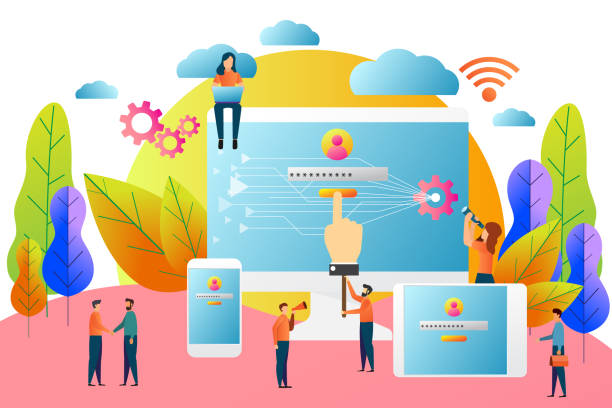
After the initial planning, it’s time for the technical aspects of #multilingual website design.
Choosing a suitable #Content Management System (CMS) that supports multilingual capabilities is an important step.
Platforms like WordPress with plugins such as WPML or Polylang, or Drupal, which has native multilingual capabilities, are popular choices.
The URL structure for each language, including the use of language codes in the URL (e.g., example.com/en/page) or country-specific domains (e.g., example.co.uk), must be carefully chosen to aid #SEO.
Proper use of the hreflang tag in the website’s HTML is essential for informing search engines about different language versions of a page.
These tags help Google serve the correct version of a page based on the user’s language and geographical region.
This is a specialized topic that requires high technical precision.
Also, you need to ensure that your server supports various language characters (such as UTF-8).
This section helps you understand and correctly implement the technical complexities related to multilingual website design.
| Method | Example | Advantages | Disadvantages |
|---|---|---|---|
| Subdirectories | example.com/en/ | Easy management, centralized SEO | May appear less localized |
| Subdomains | en.example.com | Separate hosting capability, stronger SEO for each language | More complexity in management |
| Country Code Top-Level Domains (ccTLDs) | example.co.uk | Highly localized, best for regional SEO | Highest cost and management complexity |
Efficient Content Management and Translation Process
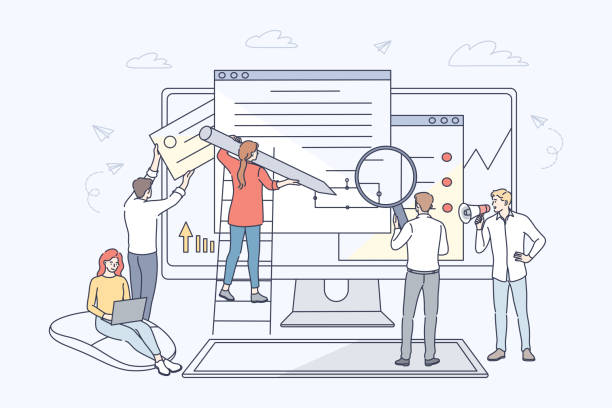
One of the biggest challenges in #multilingual website design is managing and updating content in different languages.
Mere literal translation is not enough; instead, you need content localization, which includes adapting phrases, idioms, units of measurement, dates, and even colors and images to the target audience’s culture.
For this purpose, using #native-speaking translators and specialists in your business field is crucial.
Translation Management Systems (TMS) and Translation Memory (TM) tools can accelerate the process and help maintain the consistency and quality of translations over time.
These tools, by storing previous translations, prevent re-translation of recurring phrases and reduce costs.
The specialized content management section in #multilingual website design must be carefully planned to ensure both efficiency and quality.
Consider what problems could arise if questionable content is not correctly translated into one language.
Therefore, a robust quality control process is essential to ensure the accuracy and cultural appropriateness of all translations.
This section is a tutorial to ensure proper management of your multilingual content.
Is your current e-commerce website design causing you to lose customers and sales?
Rasawweb is your solution with modern and user-friendly e-commerce website designs!
✅ Significant increase in conversion rates and sales
✅ Building strong branding and gaining customer trust
⚡ Get free e-commerce website design consultation from Rasawweb!
User Experience (UX) and Visual Design for Global Audiences

The success of a #multilingual website design is not limited to accurate content translation; it also depends on its #User Experience (UX) and #visual design.
The website’s layout, navigation, and visual elements should be understandable and appealing to users from different cultures and languages.
For example, in some cultures, the reading direction is right-to-left (like Persian or Arabic), which requires a completely different design.
Fonts, colors, and symbols may also have different meanings in various cultures and must be chosen carefully.
Providing a clear visual solution for language switching, such as a dropdown menu or small flags, is very important.
This section is a guide to improving your multilingual website’s UX.
Ensure that images and graphics are also appropriate in all language versions and do not convey unintended messages.
The ultimate goal is for users in any language to feel comfortable and connected to your website.
An entertaining yet informative website can attract more visitors through user-friendly design.
Remember that #multilingual website design goes beyond translating words and involves complete adaptation to users’ cultural expectations.
This cultural adaptation is the cornerstone of a successful global user experience.
Search Engine Optimization (SEO) for Multilingual Websites

#SEO for multilingual websites has its own complexities, requiring an analytical and specialized approach.
As mentioned in the technical section, proper use of the #hreflang tag is crucial for guiding search engines to the correct language versions of your website.
Furthermore, you should perform keyword research separately for each language, as popular keywords in one language may differ in another.
Translated content must be high quality and unique to prevent duplicate content issues.
Building strong internal and external link-building for each language version is also of high importance.
Monitoring and analyzing SEO performance in each language can help identify strengths and weaknesses and enable continuous optimization.
This analytical section aims to increase the visibility of your multilingual website in search engines.
Ensure that page loading speed is optimized in all language versions, as speed is a crucial factor in SEO ranking.
#Multilingual website design without a strong SEO strategy will not fully realize its potential.
This is a long-term investment that pays off, as attracting organic traffic continuously expands your customer base.
Precise search engine optimization guarantees success in international markets.
Performance, Maintenance, and Continuous Updates of Multilingual Websites

After launch, #multilingual website design requires continuous maintenance and updates to retain its optimal performance.
This includes checking broken links, regular updates of plugins and CMS core, and ensuring appropriate loading speed across all language versions.
To improve speed, you can use Content Delivery Networks (CDN) that deliver content from the server closest to the user.
Regular testing of website performance on various devices and browsers, as well as in different languages, is essential to identify and resolve potential issues.
This is a news and specialized section that helps you keep your website always in optimal condition.
Maintaining a multilingual website design is not a one-time task but an ongoing process crucial for ensuring long-term success.
Any content updates or website changes must be applied across all languages to maintain consistency and coherence.
This process may seem complex, but with the right tools and a strong support team, it is manageable.
| Tool/Technology | Description | Importance for Multilingual Site |
|---|---|---|
| CDN (Content Delivery Network) | Distributed servers for fast content delivery | Reduces loading time for users worldwide |
| Speed Testing Tools (e.g., Google PageSpeed Insights) | Performance analysis and improvement suggestions | Ensures optimal speed in all language versions |
| Uptime Monitoring Systems | Monitors website availability | Quickly identifies global accessibility issues |
| Translation Management Systems (TMS) | Comprehensive platforms for managing the translation process | Maintains quality and consistency in multilingual updates |
Marketing and Expanding Influence in International Markets

Once your multilingual website is fully launched, it’s time for marketing it.
Your digital marketing strategies should be tailored separately for each target market and language.
This includes PPC advertising in Google Ads with local keywords, content marketing with valuable and localized content, and using popular social media networks in each geographical region.
For example, popular social platforms in China may differ from those popular in Europe or America.
Additionally, collaborating with local influencers can help increase brand awareness and attract new customers.
This section provides practical and engaging guidance for expanding your influence in international markets.
Multilingual website design is just the beginning; true success comes when you can properly introduce this website to your target audience.
Accurate analysis of traffic data and user behavior through tools like Google Analytics in each language provides valuable insights for optimizing marketing campaigns.
This analytical approach allows you to maximize your return on investment and gain the most from your presence in global markets.
Are you tired of your company’s website not meeting your expectations? With Rasawweb, design a professional website that truly represents your business.
✅ Increased attraction of new customers and sales leads
✅ Increased brand credibility and trust among your audience
⚡ Get a free website design consultation!
Common Challenges and Effective Solutions in Multilingual Site Management

Despite numerous advantages, #multilingual website design can also come with challenges.
These challenges include high translation and localization costs, technical complexities related to SEO and implementation, and the need for continuous maintenance.
To counter costs, AI tools can be used for initial translation, followed by human editors.
For SEO issues, consulting with multilingual SEO specialists and proper use of hreflang tags are essential.
Additionally, building an in-house team or collaborating with a specialized agency to manage all languages can help address maintenance challenges.
This section contains thought-provoking and analytical content to help you become aware of potential problems and find effective solutions for them.
One common question is, How can translation quality be ensured over time? The answer lies in regular quality control processes and continuous user feedback.
Multilingual website design is a significant investment, and proper management of its challenges is essential to ensure return on investment.
With careful planning and appropriate solutions, you can turn these challenges into opportunities and transform your multilingual website into a powerful tool for growth.
The Future of Multilingual Website Design and Emerging Trends
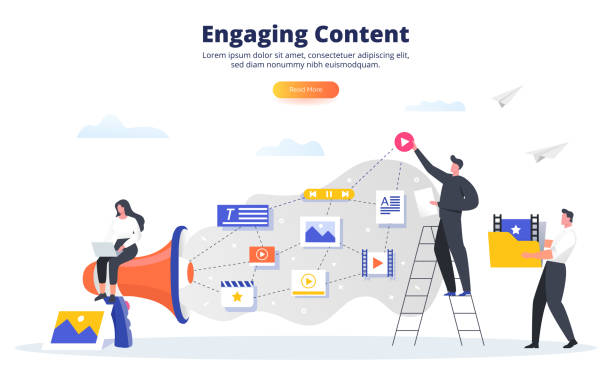
The future of #multilingual website design looks very exciting with technological advancements, especially in the field of Neural Machine Translation (NMT) and #Artificial Intelligence.
These technologies can make the translation process faster, more accurate, and more cost-effective.
Also, it is expected that #content personalization based on language, culture, and even user browsing history will play a more prominent role.
The emergence of multilingual voice search and the need for its optimization is another emerging trend that should be considered.
This news and entertaining section gives you ideas for the future.
Given the increasing globalization of businesses and the rise in internet users worldwide, the demand for multilingual website design will continue to grow.
Awareness of these trends and readiness to adapt to them can help you stay ahead in the global competition.
Future websites will not only provide accurate translations but also offer a fully localized and personalized user experience.
This includes new interactive capabilities and dynamic content that automatically adjusts to the user’s language and culture.
Ultimately, #multilingual website design is expected to move towards greater and smarter automation, which will make the management and maintenance of global websites even easier.
Frequently Asked Questions
| Question | Answer |
|---|---|
| What is a multilingual website? | It is a website whose content is available to users in several different languages. |
| Why should we design a multilingual website? | To expand reach to international audiences, increase website traffic, improve SEO in target markets, and provide a better user experience for non-Persian speaking users. |
| What are the main methods for implementing a multilingual website? | Using subdomains (e.g., en.mysite.com), using subdirectories (e.g., mysite.com/en/), and using separate domains for each language (e.g., mysite.com and mysite.de). |
| Which implementation method is better for SEO? | Generally, using subdirectories (language folders) is often recommended due to the transfer of main domain authority to other languages. |
| What is the Hreflang tag and what is its use? | It is an HTML tag or HTTP Header that informs search engines which version of a page is suitable for which language or geographical region. This tag prevents Duplicate Content and improves SEO. |
| How is a Language Switcher designed? | Usually, by using a dropdown menu, button, or flag in the header or footer of the site, which allows the user to select their preferred language. |
| Is automatic (machine) translation suitable for a multilingual site? | No, machine translation usually has low quality and many errors that can harm the site’s credibility. Human translation or a combination of human translation and machine editing is recommended. |
| What are the most important SEO tips in multilingual website design? | Proper use of the Hreflang tag, having an appropriate URL structure for each language, translating titles and meta descriptions, translating core content, and internal linking between related language versions. |
| Should all website content be translated? | It depends on the strategy. Usually, the main and important content of the site should be translated. Less important sections or blogs may not require full translation. |
| What are the main challenges in multilingual website design? | Content management in different languages, translation costs, technical issues related to URLs and language tags, template compatibility with right-to-left (RTL) languages like Persian and Arabic, and multilingual SEO management. |
And other services of Rasawweb Advertising Agency in the field of advertising
How to use analytical tools to improve sponsored articles
Increase sales using interactive sponsored articles
Pricing strategies in sponsored articles for electric kitchen appliances
The role of quality assurance in attracting online customers
How to use customer ratings and reviews in sponsored articles
And over hundreds of other services in the field of internet advertising, advertising consultation, and organizational solutions
Internet Advertising | Advertising Strategy | Sponsored Articles
🚀 For significant growth of your business in the digital world, Rasawweb Afarin offers you comprehensive digital marketing solutions. With our professional services, from WordPress website design to SEO and social media management, experience a powerful and impactful presence.
📍 Tehran, Mirdamad Street, next to Bank Markazi, Kazeroon Jonubi Alley, Ramin Alley No. 6




